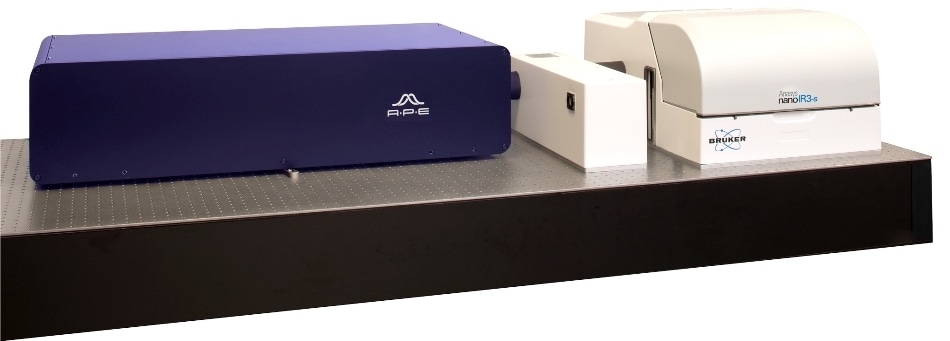At the 4th Annual European Forum on Nanoscale IR Spectroscopy, Bruker today announced the release of the nanoIR3-s Broadband™, the most advanced nanoscale FTIR spectroscopy system available to researchers.

The system combines Bruker’s industry-leading, high-performance, nanoIR3-s s-SNOM (scattering Scanning Near-field Optical Microscopy) based platform with the most advanced femtosecond IR laser technology.
This combination uniquely provides researchers with the opportunity to make groundbreaking new discoveries in the field of nanoscale FTIR spectroscopy and chemical imaging for advanced polymeric materials and life science applications. It is also applicable in nanoscale optical imaging of 2D materials, including plasmonic fields and nanophotonic structures.
The novel nanoIR3-s Broadband system sets new standards in nano-IR spectroscopy and nanochemical imaging. It provides the broadest, tunable mid-IR spectral range with the highest power and the lowest noise, while also delivering unrivalled correlation to FTIR spectroscopy. Taken together, the new system provides the broadest coverage for nanoscale chemical applications for both organic and inorganic materials.
Brukers’ nanoIR technology has a demonstrated broad application space, from energy science, environmental science, and chemical physics to quantum materials, nanochemical analytics — you name it.
With the latest light source technology that our team has helped develop, we have a broadband laser with superior stability, tunability and spectral irradiance. Taken together, this is the most advanced, combined s-SNOM/AFM-IR system on the market, powered by the most advanced light source.”
Professor Markus B. Raschke, University of Colorado
About the nanoIR3-s Broadband
The nanoIR3-s Broadband system provides a unique capability for nanoscale imaging and spectroscopy over the entire mid-infrared spectral range (2.5 to 15 μm / 4000 to 670 cm-1) by coupling with a broadband light source based on a novel femtosecond OPO/DFG laser.
While featuring high laser power and wide spectral range, this laser source can also switch its linewidth for imaging and spectroscopy. Ultimately, the system provides the highest performance spectroscopy and imaging for 2D/graphene materials, while enabling nanoscale material property mapping and sample environmental control options.
The nanoIR3-s Broadband system comprehensively addresses the requirements for nanoscale FTIR broadband spectroscopy and high-resolution imaging for a range of applications, including 2D materials, polymeric materials, and biomaterials.
Building upon the highly respected Anasys technology, the new system significantly expands multi-modal capabilities for the most advanced research applications, while also focusing on user-productivity improvements. This is simply the most advanced nanoscale IR spectroscopy system available for materials researchers in this field.”
Dean Dawson, Bruker’s Sr. Director and Business Manager, nanoIR Products